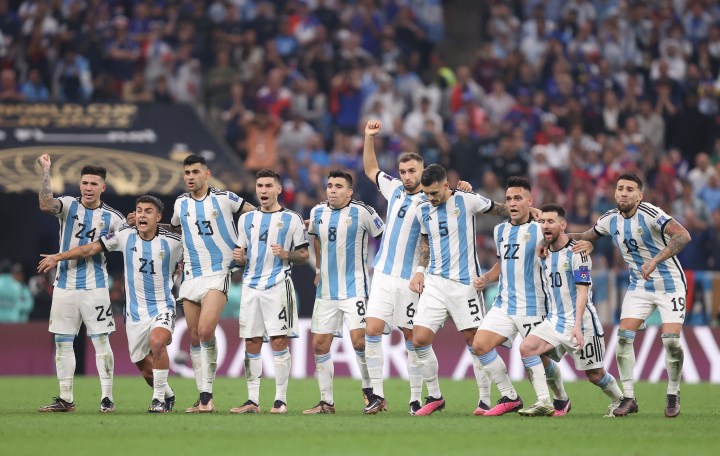
What the World Cup can teach us about game theory
Share Now on:
What the World Cup can teach us about game theory

In a tense World Cup finale that had France and Argentina tied 3-all, the match was decided Sunday by a “penalty shootout” in which Argentina emerged victorious after scoring the winning goal.
This tiebreaking method, which has been used in 35 matches throughout World Cup history, was last used to decide a final back in 2006.
In a penalty shootout, each soccer team selects five of its players to take a penalty kick, alternating to see who can win the most kicks in a best-of-five arrangement.
The players strategize which part of the net to kick the ball in, with the goalkeeper trying to anticipate where the ball will land. If this interaction sounds like the perfect opportunity to use game theory to determine the optimal strategy, it is. Economists are studying this very topic.
According to scholar William Poundstone, the question at the heart of game theory: “When people have conflicting motives, what should they do in various difficult situations?”
A 2002 paper by economist Ignacio Palacios-Huerta looked at penalty kicks, an ideal scenario to test game theory since few strategies are available to these players compared to players in other pro sports settings. In tennis, for example, the direction of the serve, its spin and the location of the opponent are all crucial, with the game continuing on after that first serve.
In a penalty kick, because of the ball’s speed on its path to the goal, it’s best for the goalkeeper to begin moving when the kicker touches the ball, with the kicker having to choose which side to aim for before the goalkeeper moves. “Both kicker and goalkeeper must move simultaneously,” Palacios-Huerta wrote.
If the goalkeeper knows your tactics and figures out that you are likely to kick to the right, they will move to the right to stop you from scoring. The defender’s move may well succeed, even if it’s your strong side. That’s why choosing your strong side may not be more advantageous to you than the alternative — your go-to maneuver may be well-known to your adversary. So to catch them off guard, mix up your strategies.
Based on that idea, Palacios-Huerta tested the prediction that the probability of scoring a goal should be the same regardless of the kicker’s strategy, and he found that they are indeed “statistically identical.” The scoring rate for all kickers on their “natural,” or stronger, side is roughly 82.7%, compared to 81% for their “non-natural” or weaker side.
Palacios-Huerta’s paper also tested the idea of wheher each player’s choices are “serially independent” or unrelated to their previous actions or those of their opponent. Random, in other words. He found that is indeed the case, with soccer players switching strategies neither “too often nor too little.”
In sports, as in business, it can’t hurt to keep your competition guessing.
There’s a lot happening in the world. Through it all, Marketplace is here for you.
You rely on Marketplace to break down the world’s events and tell you how it affects you in a fact-based, approachable way. We rely on your financial support to keep making that possible.
Your donation today powers the independent journalism that you rely on. For just $5/month, you can help sustain Marketplace so we can keep reporting on the things that matter to you.












